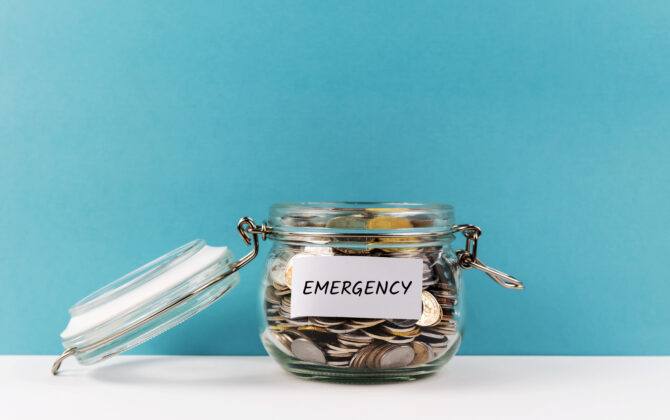According to a 2021 Bankrate survey, US adults on average have used the same primary checking and savings accounts for roughly 17 years each — largely out of convenience.
While your bank may stay the same, life changes, and there are several reasons you might want to consider switching banks. You might be seeking better rates or services that your current bank doesn’t offer, improved customer service, fewer fees, or more physical locations near you. You also might want to consolidate and streamline your finances by moving your checking and savings accounts to the same institution.
Whatever your reason, the process of switching banks doesn’t have to be a hassle. With a few clear guidelines on choosing a new bank and a step-by-step approach to making the switch, you can get it done with minimal fuss. Here’s how to make the process as simple as possible.
The benefits of switching to one bank
Combining your checking and savings under one bank can be a great way to take control of your finances. Not only is it easier to keep track of all your money in one place, but many banks also offer better rates or other perks if you have multiple accounts. Here are some additional benefits:
Instant transfers
Transferring funds from savings to checking, or vice versa, can take a day or two (and sometimes incur fees) when moving between institutions. When both accounts reside with the same bank, you can transfer funds online or via an app, and the money will be ready immediately whenever needed.
Bonus programs
Some banks offer bonus programs when you hold more than one account. For instance, your combined balance might earn you preferred rewards or a cashback bonus upon opening.
Banking strategy opportunities
When you have multiple accounts at the same bank, you may be able to take advantage of personal banking strategies that wouldn’t be accessible with split accounts. For instance, keeping a minimum balance in your checking account and the rest in your savings allows you to reap the rewards of the savings account’s interest rate. If you ever dip too close to the threshold for checking, you can make an instant transfer to avoid overdraft fees.
What should you look for when switching banks?
When looking for a new bank, you should consider items such as interest rates, features, and fees. Your personal needs will vary in each category, so it’s important to shop around and compare different options.
Make a wish list of your banking needs and preferences — are you looking to maximize your savings with a high yield savings account that offers a competitive rate? Maybe you’ve moved and need more ATMs local to you, or a debit program that offers fewer foreign transaction fees. Or maybe a digital bank offers the most convenient on-the-go features. You know your individual circumstances best — if you’re someone who can’t keep track of your balance, maybe you need a forgiving overdraft program with a built-in buffer. Or perhaps an introductory offer for new checking accounts caught your eye — just be sure to read the terms and conditions to make sure you want to be a longer-term member of that bank. Here are a few other features to consider:
How to switch banks: Step by step
Once you’ve chosen a new bank, it’s time to start making the transition. Here’s your step-by-step guide to a complete transfer of assets:
1. Make a list of your automatic and tied payments
First, review your current bank accounts and note all automatic withdrawals and deposits. Make a list — there may be more than you realize. Look for monthly, bimonthly, and annual tied payments. These may include bills, subscription and membership accounts, direct deposits, recurring transfers, and any other regular transaction that will need to switch over to the new accounts.
2. Open your new bank accounts
To open a new bank account, you will usually need to provide proof of identity (such as a driver’s license, passport, or state ID). You may also need to supply additional personal information, such as your Social Security Number or address. Some banks require you to make an initial deposit when you open the account. Once these requirements are met, you should be able to get your new bank accounts up and running.
Be sure to take advantage of any new account bonus offers. Many banks will allow you to open an account online, though some may require you to visit a branch or set up an in-person appointment.
3. Update and link your new bank accounts
Once the account is open, sign up for any programs you used at your old bank – or are looking forward to – such as:
- Mobile banking
- Paperless enrollment
- Link your checking or savings account
Download your new bank’s app and note how long you’ll need to wait for debit cards to arrive (often 7 business days from account opening). Sign into your new bank account and note where to find any routing and account numbers in the future.
Next, address that list of automatic and tied payments and switch all your information to the new bank. Start with the direct deposits, which may include your paycheck, government benefit payments, and any other deposits you have linked to your accounts. Be sure to update your paycheck direct deposit with your employer. (Check with your employer if you have questions on how to make this switch to your new account.)
Once you’ve set up direct deposit and your account is funded, you can update bill payments and transfers in online banking or using the app. This can also be a good time to set up any automated or recurring transfers, such as deposits from your checking to your savings account.
4. Close your old bank accounts
While this part shouldn’t be tricky, read the fine print to avoid fees – some banks don’t make this easy because they want to keep you as a client. If you have sufficient funds to meet the minimum balance requirements, it may be wise to keep both sets of accounts open for a full billing cycle to ensure all automatic payments transfer appropriately.
When you’ve confirmed that all your direct deposits, payments, and transfers have switched over, you can stop using or close your old bank account.
Use an ACH transfer (or personal check) to move any remaining funds to your new accounts, and be sure to securely dispose your old checks, deposit slips, and debit cards.
Get started with your new banking strategy
Combining your checking and savings accounts under one bank can be savvy personal finance strategy. Not only is it easier to keep track of all your money in one place, but you could also reap bonuses like higher interest rates or discounted loan terms in the future. Keep the process simple and streamlined —with as little red tape as possible — by choosing your new bank carefully, reviewing the details, and following our step-by-step guide when making the switch.




